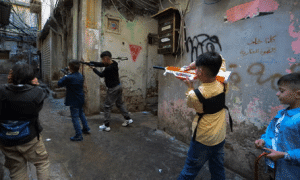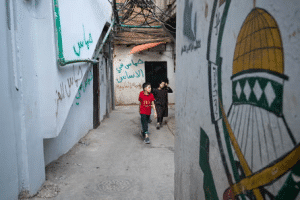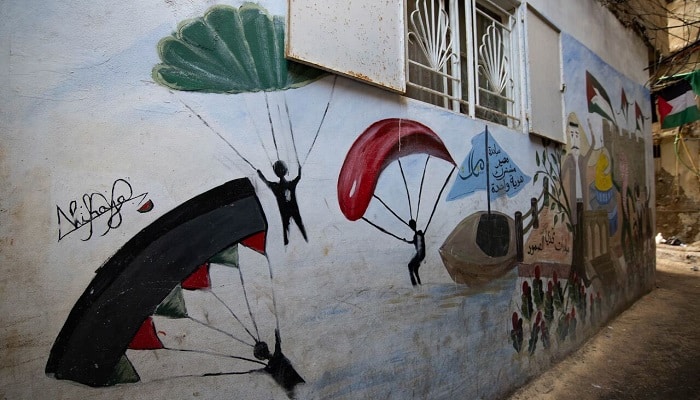PNN – The Guardian newspaper wrote: Support for Hamas has increased among Palestinians living in Lebanese camps, and the young Palestinian generation now dreams of returning to their independent country.
According to the report of Pakistan News Network, Guardian added: The inverted red triangle (the symbol of the Palestinian flag) is ubiquitous, stenciled on walls, shop shutters, and guides visitors through the narrow alleys that isolate the Burj al-Barajneh refugee camp in Beirut.
According to this English newspaper, the presence of emblems of the Palestinian flag, the images of the Hamas attack on the positions of the Zionist regime in the walls of this 270 km camp show a change in the views of its residents in favor of armed struggles.
Nihan Ayman Ibrahim, a 25-year-old Palestinian artist whose paintings decorate the walls of this camp, said that we feel proud and are more aware of the reason (for this attack). In one of the paintings, paratroopers are depicted, which reminds of the landing of the resistance forces in the October 7th attack against the positions of the Israeli regime. In these murals, you can see the image of Abu Obeidah, the spokesman of Hamas, whose face is covered with a scarf.
“Despite everything that happened in Gaza and all the victims,” said the artist, “we are with them.”
The Guardian wrote: Hundreds of thousands of Palestinians have been living in Palestinian refugee camps in Lebanon for decades without having citizenship. They are isolated in their host communities and have no hope for the future.
The war in Gaza has changed the normal routine of life in this camp, boys armed with plastic machine guns play war games, run through crowded streets and take shelter behind walls painted with red triangles. Adults also follow the coverage of the Gaza war in cafes.

In the continuation of its report, the Guardian has mentioned the increase in tension on the border of the occupied territories and Lebanon and the daily exchange of fire between the Zionist forces and the Hezbollah forces: Western countries have declared Hamas a terrorist organization, but the Palestinians call them resistance forces. The October 7th attack is not considered a terrorist act, but rather an inspiration, and symbols such as the red triangle, paratroopers of the resistance forces, and the images of Hamas spokesman Abu Obeidah wearing a cap are emblazoned on pins, t-shirts, and coffee mugs and have been absorbed into popular culture, and their appeal goes beyond Palestinian communities.
The Guardian quoted a local Hamas official as saying that “hundreds” of young people have called him in recent months in the city of Sidon in southern Lebanon, asking to join the armed resistance.

This Hamas official said that they want us to give them weapons so that they can join the battlefield from southern Lebanon.
The Guardian wrote: Saida in the south of Lebanon is the location of the Ain Halweh camp. The largest refugee camp in Lebanon, where about 120 thousand Palestinian refugees live in a land of less than half a square kilometer.
A Hamas fighter, who asked not to be named, said about the camp that when the Gaza war began, a “general mobilization” took place in the camp and young men lined up to join the Hamas resistance forces.

